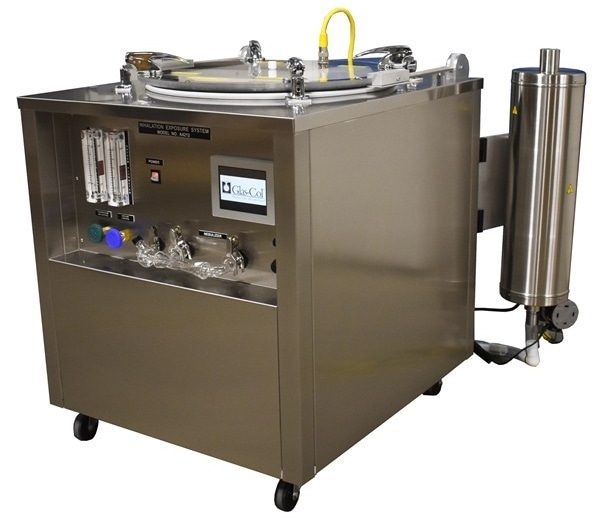Sponsored Content by Glas-ColNov 23 2018
Primarily targeting the lungs, tuberculosis is an infectious disease which spreads via bacterial inhalation. The majority of infections are latent, which means that patients do not present any noticeable symptoms. It is estimated that approximately one quarter of the earth’s whole population is infected with TB, according to the World Health Organization (WHO).

TB cases can become active, and there is a high rate of fatality for people who suffer from its untreated symptoms. These symptoms include: fever; persistent phlegmy or bloody coughing; glandular swelling; and a reduced appetite. Believed to have been the cause of more fatalities in the last two centuries than any other infectious disease, TB is listed as one of the top ten causes of death across the globe.
As more than 95% of TB deaths occur in low- and middle-income environments, TB research is central to the achievement of worldwide Sustainable Development Goals. Established laboratory instruments are used to perform diagnoses and support treatments.
However, even though approximately 53 million lives were saved between 2000 and 2016 courtesy of TB treatment methods already in existence, enhanced techniques are still needed in order to characterize TB exposure in realistic conditions.
In controlled conditions, simulating real-world parameters, a cutting-edge approach to the assessment of the characteristics of airborne pathogens such as mycobacterium tuberculosis (MTB) is offered by inhalation exposure systems. Laboratory instruments for inhalation exposure analysis are explored in greater detail in this article.
Innovative Laboratory Instruments for Inhalation Exposure
Designed for experiments which involve the exposure of animals to nebulized pathogens, inhalation exposure systems are self-contained laboratory instruments. Researchers are allowed to produce airborne droplets of infectious agents like MTB by these units.
Distinct atmospheric conditions can consequently be simulated in order to monitor the rate of infection against stringently-controlled parameters, such as: air flow rate; pathogenic concentration; and length of exposure.
A number of district laboratory instruments make up this unit, each of which works in conjunction with the other instruments in order to provide the most accurate research results possible. The inhalation exposure chamber is the primary component, and this can be formulated as a full-size aluminum cabinet or as a desktop unit.
In the chamber on top of a supporting baffle plate, mesh animal containment baskets are loaded. A homogenizing component is used to introduce the antigenic sample to the chamber. This atomizes the sample with the use of pressurized air.
This is the most critical laboratory instrument in the array, drawing air from the room beyond the decontamination system to provide a suitable mixture for delivery.
Deep-lung infections which reflect real-world conditions can be produced accurately by these systems, in order to provide insights into the characteristics of airborne pathogens under differing parameters.
Outstanding laboratory instruments are also included with inhalation exposure systems, in order to reduce incidental pathogen exposure and for decontamination procedures. Ultraviolet light of 254 nm is produced by UV lamps which are equipped to the cabinet, with an incinerator attached in order to purify the interior chamber both before and after experimentation.
The importance of this equipment for researching the characteristics of airborne pathogens is always increasing, with applications for TB research and development.
Laboratory Instruments from Glas-Col
A wide variety of innovative solutions for laboratory applications are provided by Glas-Col, including diagnostics and pharmaceutical research with important humanitarian and moral impacts. Research into airborne bacteria such as MTB could fundamentally inform future health and sanitation practices, as the WHO seeks to end the TB epidemic by 2030.
About Glas-Col
Glas-Col is the world's leading manufacturer of laboratory products and industrial heating and mixing technology. The combination of modern facilities, and highly trained personnel, keep Glas-Col on the leading edge of technology for pharmaceutical, biotechnology, semiconductor, industrial, and the research & development industry.
Ongoing product development, using state-of-the-art manufacturing concepts and materials, is one of the key ingredients to Glas-Col's continued success in meeting our client's application requirements.
With over 70 years of experience Glas-Col is also capable of meeting the needs of researchers and scientists. Our laboratory equipment and industrial products are backed by our excellent service, support and technical know how. Glas-Col is an ISO certified company and has maintained this certification for fourteen straight years. Our goal is to provide quality laboratory equipment, safety accessories and industrial products which will provide you, the customer, repeatable, reliable, results.
Sponsored Content Policy: News-Medical.net publishes articles and related content that may be derived from sources where we have existing commercial relationships, provided such content adds value to the core editorial ethos of News-Medical.Net which is to educate and inform site visitors interested in medical research, science, medical devices and treatments.